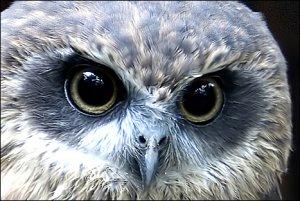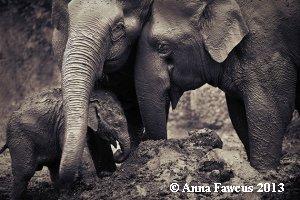![]()
By tfawcus
All hail, Pantoum, Malay malaise
Pan pipes entomb a dual sense
Tucked up within each other's phrase
With treasure shared beyond expense
Pan pipes entomb a dual sense
Lines fixed in one climb up a rung
With treasure shared beyond expense
A pantomime so richly sung
Lines fixed in one climb up a rung
As sense now slides across the verse
A pantomime so richly sung
Takes time and causes one to curse
As sense now slides across the verse
At last the tail engulfs the head
Takes time and causes one to curse
So here's an end. It's put to bed
At last the tail engulfs the head
Tucked up within each other's phrase
So here's an end. It's put to bed
All hail, Pantoum , Malay malaise
| Author Notes |
If my poem has done its job I shouldn't need to explain the Pantoum verse form again here!
On the other hand, if not... A pantoum is derived from a Malay verse form and has repeating lines throughout. The 2nd and 4th lines of each stanza are repeated as the 1st and 3rd lines of the next. Additionally, to complete the circularity, the 3rd and 1st lines of the poem become, respectively, the 2nd and 4th lines of the last stanza. |
![]()
By tfawcus
These minor myths that fill our mind
Fulfil an urge to simplify,
For of God's purpose we are blind.
Our struggles to demystify
Fulfil an urge to simplify
The vastness of the universe.
Our struggles to demystify
With cogent whispers quite diverse
The vastness of the universe,
Must twist the facts we cannot mend.
With cogent whispers quite diverse
Our weak attempts to comprehend
Must twist the facts we cannot mend
And reason soon becomes a wraith.
Our weak attempts to comprehend
We now believe with simple faith
And reason soon becomes a wraith
For of God's purpose we are blind.
We now believe with simple faith
These minor myths that fill our mind.
| Author Notes |
A pantoum is derived from a Malay verse form and has repeating lines throughout. The 2nd and 4th lines of each stanza are repeated as the 1st and 3rd lines of the next. Additionally, to complete the circularity, the 3rd and 1st lines of the poem become, respectively, the 2nd and 4th lines of the last stanza.
Thanks to Gary's Art for the accompanying portrait of Joseph Campbell, whose writing inspired this poem. |
![]()
By tfawcus
My tongue now stumbles over words
They disassemble in my brain
They fluster like a flock of birds
Unravel what I've said again
They disassemble in my brain
My mind is blank, the words dispersed
Unravel what I've said again
I grasp for meanings now reversed
My mind is blank, the words dispersed
Like ancient leaves that fall from trees
I grasp for meanings now reversed
They slip and swirl and gently tease
Like ancient leaves that fall from trees
My thoughts are lost. They're not my own
They slip and swirl and gently tease
My mind's a shell I have outgrown
My thoughts are lost. They're not my own
They fluster like a flock of birds
My mind's a shell I have outgrown
My tongue now stumbles over words
| Author Notes |
The pantoum, with its shifts in meaning and its repetitions seemed like the perfect form in which to write about the confused state of mind that comes with senile dementia.
It has repeating lines throughout. The 2nd and 4th lines of each stanza are repeated as the 1st and 3rd lines of the next. Additionally, to complete the circularity, the 3rd and 1st lines of the poem become, respectively, the 2nd and 4th lines of the last stanza. This is the last in my current series of pantoums. The time has come to lock horns with the villanelle! It could be a lengthy struggle with not much to show for it for a while! |
![]()
By tfawcus
Aboard my silent silver ship
I sped. The wind was in my soul
I set out on a lonely trip
The isle of Lesbos was my goal
I sped. The wind was in my soul
A nightmare journey though it seems
The isle of Lesbos was my goal
To find my Sapphic cave of dreams
A nightmare journey though it seems
Cruel Eros made it hard for me
To find my Sapphic cave of dreams
He set my heart adrift at sea
Cruel Eros made it hard for me
To sing my soul's eternal tune
He set my heart adrift at sea
My lyric voice besought the moon
To sing my soul's eternal tune
With notes of tidal lunacy
My lyric voice besought the moon
Will Sappho ever join with me
With notes of tidal lunacy
I set out on a lonely trip
Will Sappho ever join with me
Aboard my silent silver ship
| Author Notes |
Yeltel recently challenged me to write a pantoum on a nautical theme with references to ancient Greece and this is it. I dedicate it to Sappho, a Greek poet so widely respected as a lyric poet in her day that Plato once described her as the tenth muse. She lived on the island of Lesbos in the Aegean Sea over 600 years before the birth of Christ. Only a few fragments of her verse survive. They are of unutterable beauty and some have a gentle underlying eroticism. Sadly most of her work is now lost. My poem is a quest, an odyssey if you like, a vain search for all this lost beauty.
A pantoum has repeating lines throughout. The 2nd and 4th lines of each stanza are repeated as the 1st and 3rd lines of the next. Additionally, to complete the circularity, the 3rd and 1st lines of the poem become, respectively, the 2nd and 4th lines of the last stanza. |
![]()
By tfawcus

Our stars are dancing on the sea tonight
Yet shudder at the sadness of farewell,
Alive in this blue hour of shifting light.
I watch the way they ride the rising swell
Yet shudder at the sadness of farewell.
Such sea-glass stars have twins set in the sky.
I watch the way they ride the rising swell
As we must surely do; my love and I.
Such sea-glass stars have twins set in the sky
That span the empty loneliness of space
As we must surely do, my love and I,
Until we can, at length, again embrace.
Our stars are dancing on the sea tonight
Alive in this blue hour of shifting light.
| Author Notes |
A Pantoum Sonnet is a unique and beautiful form, combining the Pantoum and the Sonnet.
Like a sonnet, it consists of three rhymed quatrains and a rhymed couplet and it is written in iambic pentameter but, like a Pantoum,, the second and a fourth line of each quatrain repeats as the first and third line of the next. The final couplet completes the circularity by repeating the first and third lines of the opening stanza. My thanks to soumyav for the image, which is licensed under a Creative Commons Attribution-NonCommercial-NoDerivs 3.0 Unported License and based on a work at https://soumyav.wordpress.com. |
![]()
By tfawcus

The Boobook owl kills silently,
her shadowed silver silhouette
suggested in the ghost gum tree,
her whisper close to flight and yet
her shadowed silver silhouette
stays poised. She waits for swaying sedge,
her whisper close to flight and yet
her prey, alert at water's edge,
stays poised. She waits for swaying sedge
reflected by the hunter's moon.
Her prey, alert at water's edge,
will make her fateful movement soon,
reflected by the hunter's moon.
A wraith with staring hooded eye
will make her fateful movement soon,
her talons piercing death's small cry!
A wraith with staring hooded eye
suggested in the ghost gum tree,
her talons piercing death's small cry,
the Boobook owl kills silently.
| Author Notes |
The Boobook is Australia's smallest owl. When I was teaching years ago near Mt Gambier in the south-east of South Australia, one used to sit outside my soldier settlement farmhouse window in a ghost gum overlooking a water meadow full of croaking frogs.
I composed this pantoum after reading CrystalCookie999's, Denhagan's and Adewpearl's recent and most accomplished examples of the form. The pantoum is derived from a Malay verse form. It is similar to a villanelle in that there are repeating lines throughout the poem. Ideally, the meaning of lines shifts when they are repeated although the words remain exactly the same. The 2nd and 4th lines of each stanza are repeated as the 1st and 3rd lines of the next. Additionally, to complete the circularity, the 1st and 3rd lines of the poem become the 2nd and 4th lines of the last stanza. My composition uses five quatrains of iambic tetrameter. |
![]()
By tfawcus

The elephant sways side to side
To seek solace from her despair
At what dire cost our tourist ride
How dastardly her journey here
To seek solace from her despair
She treads the path that crushed her dreams
How dastardly her journey here
This tourist ride her life demeans
She treads the path that crushed her dreams
Ganesh the god must shed a tear
This tourist ride her life demeans
Her wistful eye so full of fear
Ganesh the god must shed a tear
At what dire cost our tourist ride
Her wistful eye so full of fear
The elephant sways side to side
| Author Notes |
Photograph courtesy of my daughter. (For more of her work see www.annafawcus.com)
Ganesh - the elephant god Howdah - the carriage on the back of the elephant in which tourists ride (Howdahstardly!) The elephant crush - a method by which wild elephants are tamed using restriction in a cage A pantoum has repeating lines throughout. The 2nd and 4th lines of each stanza are repeated as the 1st and 3rd lines of the next. Additionally, to complete the circularity, the 3rd and 1st lines of the poem become, respectively, the 2nd and 4th lines of the last stanza. |
|
You've read it - now go back to FanStory.com to comment on each chapter and show your thanks to the author! |
![]()
| © Copyright 2015 tfawcus All rights reserved. tfawcus has granted FanStory.com, its affiliates and its syndicates non-exclusive rights to display this work. |
© 2015 FanStory.com, Inc. All Rights Reserved. Terms under which this service is provided to you. Privacy Statement